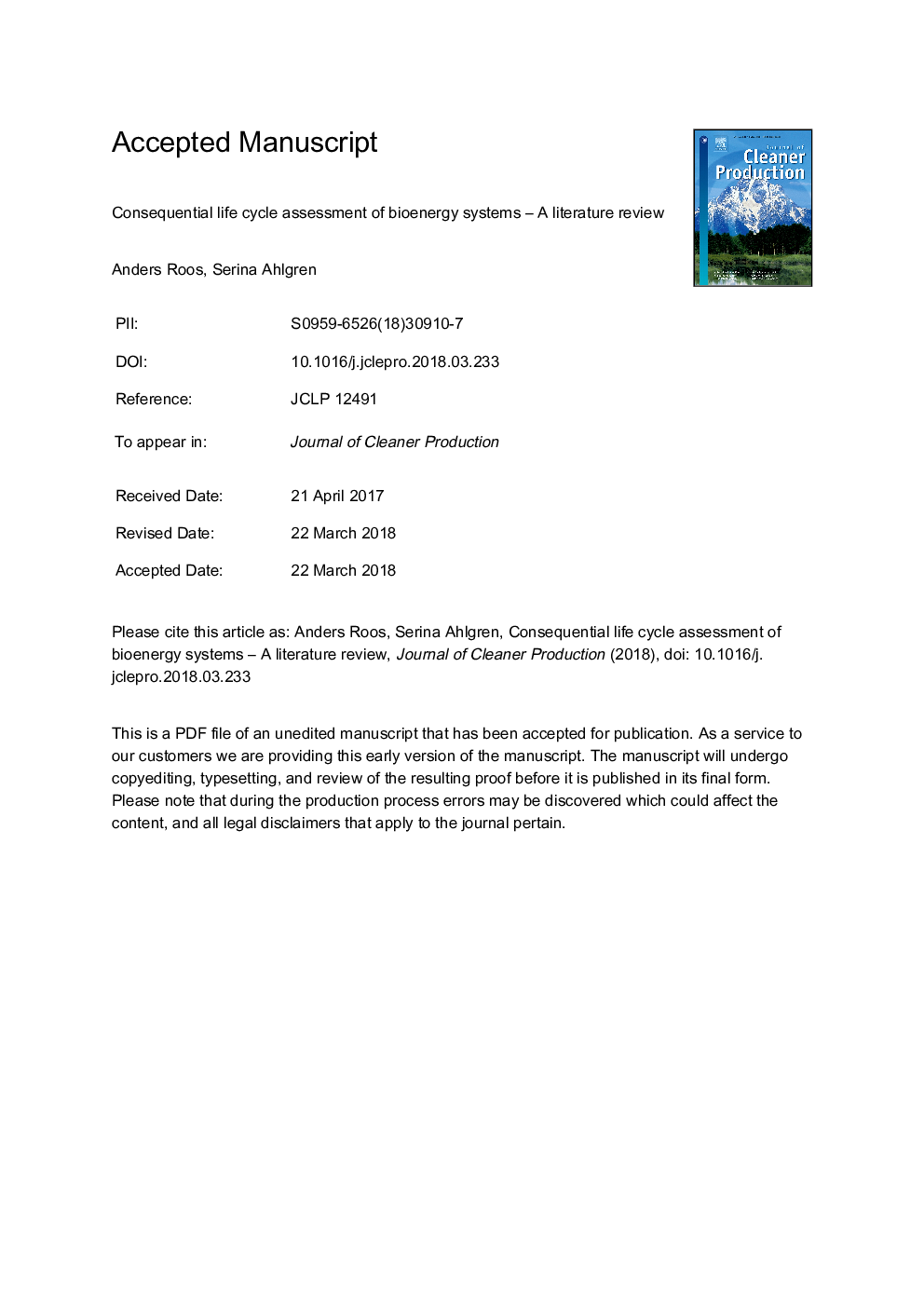| Article ID | Journal | Published Year | Pages | File Type |
|---|---|---|---|---|
| 8095149 | Journal of Cleaner Production | 2018 | 66 Pages |
Abstract
Policies and business decisions intended to promote the use of bioenergy should be based on accurate estimates of the sustainability impacts of various alternatives, including indirect consequences of any change. Consequential life-cycle assessment (CLCA) attempts to include such impacts in the analysis. This paper reviews studies that have adopted a CLCA approach to analysing the use of bioenergy, describing their main topics, approaches, empirical and methodological aspects and scenarios. The review finds that the production of studies proceeded at a modest pace from 2007, with a significant increase occurring from 2015 onward. The most studied impact is global warming potential (GWP), although other impacts are frequently taken into consideration. A majority of the studies concern the agricultural-, followed by the forest sector. The literature has a European emphasis, and relatively few studies have focused on low- and middle-income countries. The review also finds a diversity in terms of how empirical and methodological aspects are taken into consideration. Based on the findings of the review, areas of improvement for future research are suggested: an increased focus on bioenergy use in the household sectors, more studies in under-researched regions, more precise explanations of the CLCA methods used, a critical examination of the scenarios, and methodological collaboration with economic bio-sector modelling. In addition, the factors that affect the generalizability of the results can be discussed in a more systematic manner. Frameworks and procedures for improving the applicability and validity of CLCA will likely emerge as the research field develops.
Keywords
LUCdLUCCLCAAttributional life cycle assessmentLMICsGHGGWPCHPiLUCLCAConsequential life cycle assessmentLife Cycle AssessmentGreenhouse gas emissionsBiomass energyCombined Heat and PowerIndirect land use changeLand use changeLand-use changeDirect land use changeglobal warming potentialLow- and middle-income countriesGreenhouse gas
Related Topics
Physical Sciences and Engineering
Energy
Renewable Energy, Sustainability and the Environment
Authors
Anders Roos, Serina Ahlgren,
